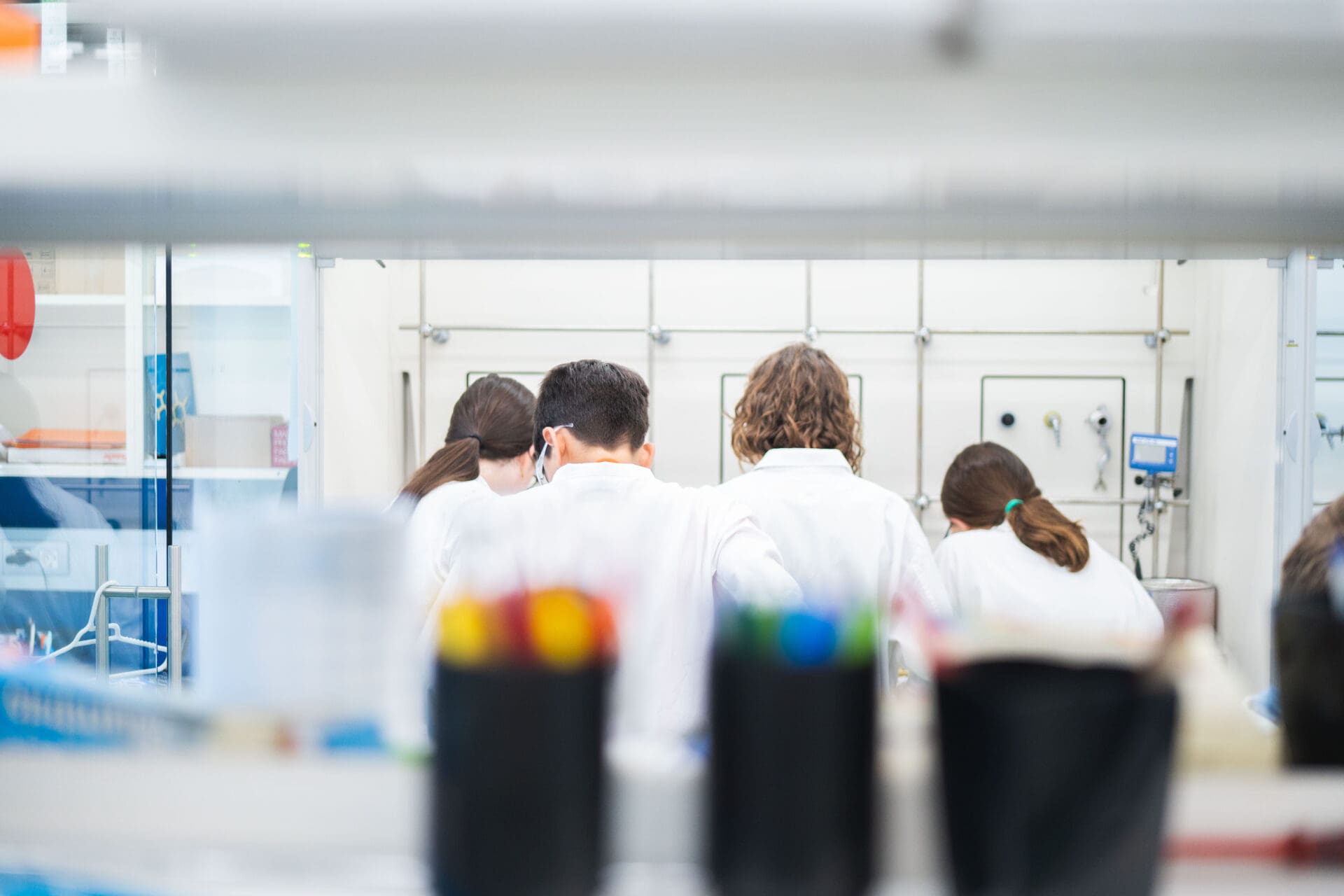Vegetal pigments
Objective: Extracting the photosynthetic pigments and separating them using a simple thin-layer chromatography technique

-
Laboratory materials
Mortar and pestle
Scissors
2 Beakers
Funnel and filter paper
Chromatographic plate
Pipette
Spatula
-
Reagents
Ethanol
Spinach leaves
Calcium carbonate (CaCO3)
-
Safety
Don't forget the gloves, lab coat, and safety goggles!!!
-
Questions
What do you observe when crushing the leaves of the plants?
What is observed on the chromatographic plate? What are each of the colors that appear?
Procedure
- Place the chopped plant leaves into the mortar. Add a bit of ethanol and calcium carbonate and grind until the pigments dissolve in the ethanol.
- Prepare a filter using the funnel and filter paper, and filter the mixture from the mortar.
- Cut the chromatographic plate into a long rectangle, about 4×10 cm, and draw a line with the solution 1 cm from the bottom using the pipette.
- Place it in a beaker with ethanol without touching the point and let it rest so that the liquid travels up the plate to reach the top.
- Remove the plate and observe what has happened.
Theoretical explanation
When plants photosynthesize, they manufacture their ‘food’ from atmospheric CO2 and use sunlight as their energy source. The various photosynthetic pigments capable of absorbing light are found in the leaves including chlorophyll A (blue-green), chlorophyll B (yellow-green), carotenes (yellow-orange), xanthophylls (yellow), and anthocyanins (pink). The aim of this experiment is to separate some of these pigments using the thin-layer chromatography technique.
Chromatography is a technique that allows for the separation of different components of a mixture by passing the sample through a stationary phase (in our case, the chromatographic plate) with the aid of a mobile phase (alcohol). The separation of pigments occurs because each compound moves through the plate at a different rate.















